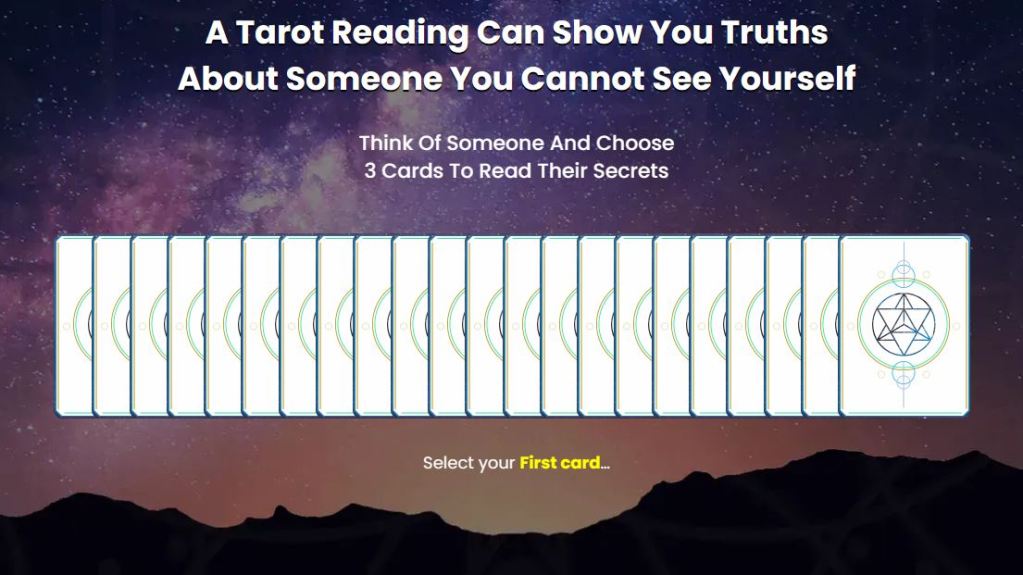- Yoga’s Tapestry: Weaving the Threads of History and Holism
- Introduction: The Timeless Tapestry of Yoga
- Vedic Beginnings
- Upanishadic Insights
- The Yoga Sutras
- Bhakti, Karma, and Jnana: The Threefold Path
- Tantric Traditions
- Modern Revival
- Eastern Philosophies in the West
- Yoga’s Universal Resonance
- Innovations and Adaptations
- Physical Prowess
- Mental Mastery
- Spiritual Seekings
Yoga’s Tapestry: Weaving the Threads of History and Holism
Introduction: The Timeless Tapestry of Yoga
Yoga, a term derived from the Sanskrit word ‘Yuj’, meaning to unite or bind, is an age-old discipline that weaves together the body, mind, and spirit into a harmonious whole. Like a grand tapestry that has been woven over millennia, each strand of yoga reflects a journey of discovery, tradition, and transformation.
Originating in the verdant landscapes of the Indian subcontinent, yoga’s roots stretch back to ancient times, drawing from the rich soil of Indic philosophies and spiritual practices. The ancient seers, or rishis, saw yoga not merely as a series of exercises but as a profound science of inner well-being, a path that leads to self-realization and union with the divine.

Over centuries, this sacred discipline has evolved, branching out into various styles and approaches, yet remaining anchored in its core principles. The teachings of the Bhagavad Gita, the philosophical depth of the Yoga Sutras of Patanjali, and the tantric practices that emerged in medieval times all contribute to the multifaceted jewel that is yoga.
Today, in a world where the rapid pace of life often leads to stress and disconnection, the allure of yoga has only grown. Its global embrace is testament to its universal appeal, as it transcends boundaries, cultures, and beliefs. From bustling urban studios to serene mountaintop retreats, yoga’s presence is felt as it continues to offer solace, balance, and a touchstone for holistic well-being to all who seek its wisdom.
As we unravel this tapestry, we’ll explore the myriad dimensions of yoga, delving beyond the physical postures to uncover the timeless truths that lie at its heart, guiding generations on a quest for inner peace, holistic health, and spiritual enlightenment.
The Ancient Foundations: Yoga’s Spiritual Genesis
Yoga, in its true essence, is more than just a form of exercise or a series of postures. It’s a spiritual discipline rooted deeply in the ancient soil of India’s rich philosophical and cultural heritage. Its evolution has been the result of profound introspection and spiritual inquiry by countless yogis and sages throughout history.

Vedic Beginnings
The dawn of yoga is intertwined with the Vedic era, with the Rigveda, one of the world’s oldest known texts, shedding light on early contemplative traditions. These Vedic hymns speak of ascetics and hermits, who retreated to forests seeking universal truths. They practiced meditation, chanted sacred mantras, and engaged in ritualistic ceremonies. While the term ‘yoga’ is not explicitly mentioned in the Rigveda, the seeds of yoga’s spiritual and meditative aspects are evident. This Vedic foundation set the tone for the spiritual journey, emphasizing the union of individual consciousness with universal consciousness.
Upanishadic Insights
As time progressed, the vast Vedic corpus gave rise to the Upanishads, esoteric texts that dove deeper into the mysteries of existence. These texts went beyond ritualistic practices, presenting a more philosophical exploration of the self, the universe, and the interplay between them. Here, the term ‘yoga’ begins to take on its more familiar connotations, with discussions centered on inner balance, self-discipline, and the transcendence of the material world. Key concepts, such as prana, the vital life force, and dhyana, the act of profound meditation, became central to the yogic discourse, forming the building blocks of later practices.

The Yoga Sutras
Several centuries later, the sage Patanjali composed the Yoga Sutras, a seminal text that stands as a cornerstone in yoga’s vast literature. This concise yet comprehensive guide distilled the wisdom of previous traditions and presented a structured path to spiritual enlightenment. Introducing the Eight Limbs of Yoga, Patanjali outlined a step-by-step approach to purifying the body, mind, and spirit. From ethical codes (yama and niyama) to postures (asanas) and breath control (pranayama) to deep meditation leading to samadhi, or enlightenment, the Yoga Sutras have remained a guiding light for practitioners seeking the ultimate union of the self with the divine.
As we journey through the annals of yoga’s history, it becomes clear that its appeal lies not just in its physical benefits but in its profound spiritual quest. A journey that transcends time and culture, beckoning every seeker to discover the universe within.
Evolution Through the Ages: Yoga’s Diverse Pathways
Just as rivers branch out and diversify as they flow from their source to the sea, the journey of yoga has seen its practices and philosophies expand, diversify, and take on multiple forms. Through the ages, these diverse pathways have emerged from the singular essence of yoga, each offering unique perspectives and methods for attaining spiritual growth and self-realization.

Bhakti, Karma, and Jnana: The Threefold Path
During the medieval period, the spiritual landscape of India was enriched with the evolution of distinct paths of yoga, catering to the varying temperaments of seekers. Bhakti Yoga emphasized the path of devotion, where love and surrender to the divine became the primary focus. Through heart-felt prayers, chants, and rituals, devotees sought union with the divine. Karma Yoga, on the other hand, highlighted selfless action. It taught that through dedicated and selfless service, one could attain spiritual liberation. Jnana Yoga, the path of knowledge, was rooted in intellectual inquiry. Through meditation and introspection, seekers endeavored to discern the real from the unreal, aiming for the realization of one’s true nature.
Tantric Traditions
Tantra, often misunderstood in the West, is a rich and intricate tradition that emerged alongside the classical yogic paths. Moving beyond mere philosophy, Tantra incorporated specific rituals, mantras, and meditation techniques, seeking to harness and elevate spiritual energy. It acknowledged the sacredness of the human experience and viewed the body as a temple, aiming to awaken latent powers and connect with cosmic energies. Tantric practices offered a holistic approach, integrating the physical, mental, and spiritual realms.

Modern Revival
The 20th century heralded a renaissance for yoga, a period where ancient wisdom met modern sensibilities. Pioneers like Swami Vivekananda introduced yoga’s philosophical depth to the West, emphasizing its universal relevance. T. Krishnamacharya, often regarded as the ‘father of modern yoga’, played a pivotal role in rejuvenating yoga’s physical practices. He blended traditional asanas with contemporary needs, sowing the seeds for styles like Ashtanga, Iyengar, and Vinyasa. These luminaries, along with many others, ensured that yoga’s essence remained intact while adapting to the changing times.
Through its many evolutions, yoga has remained a beacon of light, guiding countless souls on their spiritual journey. Its enduring relevance lies in its ability to be both ancient and contemporary, offering timeless wisdom while remaining ever-evolving.
The Global Odyssey: Yoga Beyond Borders
Yoga’s journey from the mystical terrains of ancient India to the bustling cities of the modern world is nothing short of remarkable. Its global odyssey reflects not just its adaptability but also its universal resonance, speaking to the innate human quest for balance, health, and spiritual growth.

Eastern Philosophies in the West
At the cusp of the 20th century, the Western world began to show a burgeoning interest in Eastern philosophies. Pioneering figures such as Swami Vivekananda, Paramahansa Yogananda, and later, Maharishi Mahesh Yogi, introduced the depths of yoga and meditation to the West. Scholarly conferences, world tours, and foundational texts played instrumental roles in sowing the seeds of yoga’s wisdom. While the initial draw was largely intellectual and spiritual, with enthusiasts delving into sacred scriptures and philosophical discussions, the seeds of a broader appreciation for yoga were planted.
Yoga’s Universal Resonance
With the counterculture movement of the 1960s and the increasing quest for alternative lifestyles, yoga found fertile ground to flourish. The Beatles’ famous visit to India and their association with Transcendental Meditation brought yoga and meditation into global limelight. As decades passed, yoga studios became ubiquitous fixtures in urban landscapes from New York to Berlin. No longer was yoga seen as just an esoteric Eastern practice; its physical postures, meditative techniques, and breathwork began to resonate universally. People across the world recognized the transformative potential of yoga to enhance well-being, reduce stress, and cultivate mindfulness.
Innovations and Adaptations
As yoga’s global footprint expanded, so did its forms and methodologies. While some schools remained rooted in tradition, others adapted to the needs and tastes of contemporary society. Bikram Yoga, with its sequence of 26 postures practiced in a heated room, offered a rigorous and standardized approach. Vinyasa flow, characterized by its dynamic sequencing and synchronization with breath, catered to those seeking fluidity and movement. And for the adventurous, forms like Aerial yoga added an element of novelty, using hammocks and props to challenge traditional postures. Despite these variations, the underlying essence of yoga – that of union, self-awareness, and holistic well-being – remained undiluted.

Today, as yoga continues to bridge cultures, geographies, and beliefs, it stands as a testament to the timeless and universal nature of its teachings. It’s a beacon that illuminates the path to inner peace, regardless of where one begins the journey.
Holism and Harmony: Yoga’s Multifaceted Benefits
The vast expanse of yoga, with its intricate tapestry of practices and philosophies, offers benefits that transcend the boundaries of the body and mind, touching the very essence of our being. Whether you’re a seasoned yogi or someone just beginning to dip their toes into this ancient discipline, the transformative potential of yoga is universally accessible. Let’s delve deeper into the multifarious rewards it brings to our physical health, mental well-being, and spiritual evolution.
Physical Prowess
The physical postures, or asanas, are perhaps the most visible aspect of yoga, often the initial draw for many newcomers. These postures are not merely exercises; they are designed with a deep understanding of the human anatomy and energy system. Regular practice of asanas not only enhances flexibility, allowing muscles and joints to move with ease, but also builds strength. The very act of holding a pose, whether it’s the grace of the Warrior or the stability of the Tree, develops muscular endurance and core stability. Furthermore, asanas stimulate and balance internal organs, optimize metabolic processes, and rejuvenate the body’s systems, culminating in heightened vitality and robust health.
Mental Mastery
In our increasingly chaotic world, the mind often becomes a battleground of stressors, distractions, and emotional upheavals. Here, yoga offers invaluable tools. Dhyana, or meditation, is not just about seated stillness; it’s a practice of cultivating acute awareness, mastering the mind’s wanderings, and anchoring it in the present moment. Alongside, pranayama techniques regulate the breath, which is intrinsically linked to our mental states. As we gain control over our breathing patterns, we indirectly influence our emotional responses, instilling calmness, sharpening focus, and fostering mental resilience. Over time, these practices bestow a profound sense of clarity, enabling one to navigate life’s challenges with equanimity.

Spiritual Seekings
While the physical and mental benefits of yoga are profound, its ultimate gift lies in its spiritual dimension. Yoga is, at its heart, a path of self-discovery. Through its practices, one embarks on an inward journey, unearthing layers of conditioning, ego, and illusion. This voyage leads to profound realizations about one’s true nature and the interconnectedness of all existence. Whether it’s the blissful moments in deep meditation, the transcendence felt during a chant, or the sense of oneness cultivated during communal practice, yoga continually nudges practitioners toward a recognition of the divine within and around. It’s a compass that guides souls toward cosmic harmony, aligning individual consciousness with universal consciousness.
In embracing yoga, one doesn’t just adopt a routine; one embarks on a transformative journey. A journey that promises holistic health, mental equilibrium, and a deep, abiding connection with the universe’s eternal rhythm.
Conclusion: The Continuum of Yoga
The vast and intricate tapestry of yoga stands as a testament to its timeless allure and evergreen relevance. Born from the ancient soils of the Indian subcontinent, it has seamlessly woven itself into the fabric of cultures and communities worldwide, acquiring new hues and patterns along the way. Yet, beneath its diverse expressions and myriad forms lies a core that remains unchanging: a philosophy and practice dedicated to the elevation of the human spirit.
While the modern world increasingly recognizes yoga for its potential to enhance physical health and alleviate stress, it is essential to remember that these are but surface-level manifestations of its deeper purpose. At its heart, yoga has always been about the union—connecting the individual self with the cosmic, merging the microcosm with the macrocosm. This profound yearning for oneness, for a sense of belonging and understanding in the vast expanse of existence, is a sentiment that transcends borders, languages, and epochs.

As society continues to evolve, facing new challenges and rediscovering ancient wisdoms, yoga’s adaptability ensures its continued relevance. Whether it’s in bustling urban studios, quiet countryside retreats, or digital platforms, the essence of yoga remains consistent: guiding practitioners towards a state of balance, awakening, and inner tranquility. It offers solace to the weary, strength to the challenged, and wisdom to the seeker.
In this ever-changing world, the continuum of yoga serves as a beacon, illuminating paths of holistic harmony and inner peace. Its universal resonance is a reminder that, irrespective of our external circumstances, the quest for self-realization, meaning, and connection is a shared human endeavor, bridging hearts and minds across time and territories.
Do not forget to check out all of our exciting free tools! Calculators, quizzes and downloadable checklists all for free.
















